NVIDIA's Tegra 2 Take Two: More Architectural Details and Design Wins
by Anand Lal Shimpi on January 5, 2011 2:51 PM EST- Posted in
- Smartphones
- Motorola Droid
- Tegra 2
- LG
- Optimus 2X
- ATRIX 4G
- Mobile
- NVIDIA
It’s been officially announced for some time now, but the LG Optimus 2X looks to be the first smartphone to include Nvidia’s Tegra 2 dual-core SoC. We’ve seen Tegra 2 in the ViewSonic G already, but this is the first time we’ve played with it in a real live smartphone. Suffice it to say the Optimus 2X is definitely impressive.
First and most important is exactly how fast the Optimus 2X (and thus the smartphone Tegra 2 SKU) is - we’ve got a suite of benchmarking tools we’ve been running on devices and wanted to know exactly the same thing. Sadly, we aren’t allowed to publish those numbers quite yet, but suffice it to say the Optimus 2X is one of the fastest smartphones we’ve encountered. Browsing the web felt fast in both translation/panning, multitouch zooming, and actually loading pages. What applications we did play with on the 2X also felt fast to buttery smooth, as they well should have. Hopefully we'll get to post those soon after LG is done optimizing their build of Android on the 2X.

First up, the Optimus 2X we played with was running Android 2.2.1 and will launch with that, not Gingerbread (2.3) when it makes its way to store shelves. The 2X is upgradeable to gingerbread however, though there’s no word on a timetable for that update. LG and Nvidia both reiterated that the build of Froyo on the 2X we played with was very beta and unfinished - it rebooted twice while we played with it and while doing mundane things - but LG is determined to iron out performance and stability much more before launch.
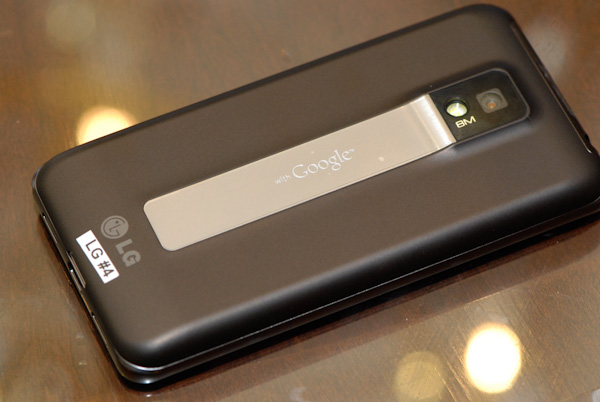
The software preload on the 2X is exactly the same as we’ve seen on other LG Android 2.2 phones - the LG Optimus One specifically. That includes LG’s own UI skin, different icons in the application launcher, and their own strict adherence to separating downloaded applications from preloaded applications among other nuances. All in all it isn’t sweeping, but stock Froyo (or better yet, gingerbread) is still what we’re wishing for.
The 2X’s industrial design is well done if somewhat understated. The rear side of the 2X reminds me of some of HTC’s earlier devices like the Touch Pro - it’s soft touch all around, dark grey with rounded edges. There’s a metal strip running the middle of the phone, and ports for the camera aperture and LED flash. I’m disappointed that LG made the same mistake HTC did by putting an extra layer of plastic between the actual first surface of the 8 megapixel camera and the outside world (something the Nexus One did that dramatically added to glare and provided a collection point for grime), but it isn’t killer. The back of the X2 peels off and reveals pretty standard fare for an Android device; 5.6 Whr Li-ion battery, microSD card slot, and SIM slot. There’s a small Droid 2-esque bulge for the camera which means the 2X doesn’t lay perfectly flat.
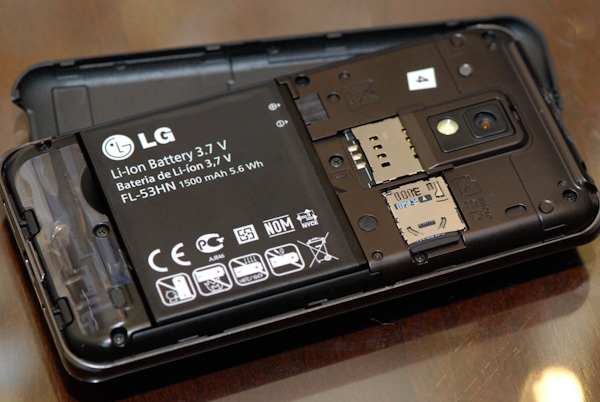
The front of the 2X is unbroken glass, with a gentle curve on each side. The 4” WVGA screen isn’t AMOLED, but rather LCD-TFT. The LCD seemed very contrasty and had good viewing angles at first glance. There’s a 1.3 megapixel front facing camera offset to the right of the earpiece. The usual set of android buttons is in the same order as the Optimus One, which means LG is at least keeping things consistent.
The sides of the 2X felt metallic and form a slight raised lip over the display. The 2X takes a definite nod from the iPhone with a speaker and microphone port at the bottom with similar shape and placement, in between is the microUSB port. At the top is the mini HDMI port cover, standard headphone jack, and standby/lock button. In terms of physical appearances and design choices, the 2X is pretty standard fare for a 4” Android smartphone. In the hands, the 2X felt beefy but not extremely heavy, and a lot like a high end device should.
Gallery: LG Optimus 2X Gallery
We didn’t spend enough time with the LG 2X to test 1080P video recording, hardware accelerated flash improvements, HDMI mirroring, or the image capture speed (which should be impressively speedy thanks to Nvidia's custom ISP), but will do so later during the show when we get more time with the hardware.


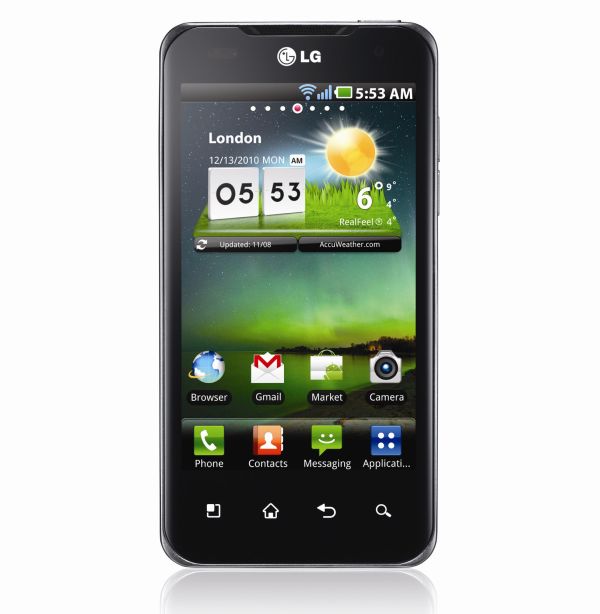
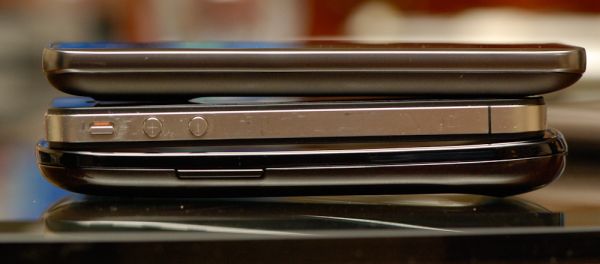
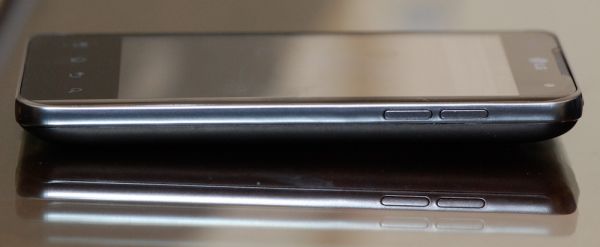














21 Comments
View All Comments
DigitalFreak - Wednesday, January 5, 2011 - link
Anand or Brian - any idea what carriers the 2x will be available on in the US?therealnickdanger - Wednesday, January 5, 2011 - link
While I don't know anything officially (I don't think anyone does yet), LG brought its current Optimus line to all carriers. I would imagine that they will do the same with the 2X - assuming one carrier seeking exclusivity doesn't dump a pile of cash on LG's doorstep.If the LG Optimus (S, T, One) are any indication of the build quality of the 2X, then I will probably be in line to buy one as soon as it is made available on Sprint. I love my Optimus S.
Cali3350 - Thursday, January 6, 2011 - link
Probably the iPhone 4. When it comes to being smooth iOS is untouched at this point in time (probably because everything is GPU accelerated).Cali3350 - Thursday, January 6, 2011 - link
Clearly posted in response to the wrong item, sorry.metafor - Wednesday, January 5, 2011 - link
I think those are "throughput" numbers, not latency numbers. The technical reference manual:http://infocenter.arm.com/help/index.jsp?topic=/co...
states "cycles" definition is merely the minimum number of cycles it takes to issue, not actually execute the instruction.
VADD, for instance, takes 4 cycles for VFP (scalar) and 3 cycles for NEON/ASE (6 to writeback).
Cali3350 - Wednesday, January 5, 2011 - link
Have to say Im pretty wildly disappointed with how you guys seem to be mentioning it will be several months before this thing launches.I am desperately waiting for a new phone right now, but want the new tech. The HTC Mecha looks like it will be a killer phone but will still be running the same old Snapdragon HTC has used since the Incredible. I was really hoping either the Optimus or the Motorola Tegra 2 phone would be out by end of January/February, but that seems like its DEF not happening after reading this. That is all sorts of disappointment.
aebiv - Wednesday, January 5, 2011 - link
You mean the HD2 and the Nexus One... Incredible and EVO were late to the Snapdragon game.sirsoffrito - Thursday, January 6, 2011 - link
I have a Droid Incredible. I beg to differ.solipsism - Wednesday, January 5, 2011 - link
Is the die size different from the Cortex-A8? I’m wondering how this could affect placement in other smartphones.solipsism - Wednesday, January 5, 2011 - link
Er, I mean in the dual-core variety.